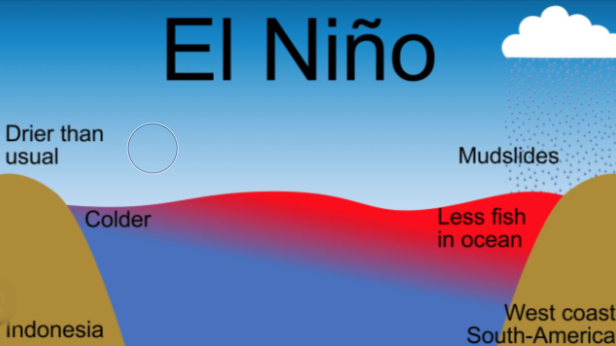Understanding Outer Space: Beyond Earth’s Atmosphere:
Outer space is the vast, seemingly infinite expanse beyond Earth’s atmosphere that has fascinated humanity for centuries. It represents the boundary of our planet and the realm where planets, stars, galaxies, and countless other celestial bodies exist. But what exactly is outer space? How does it differ from the space we occupy on Earth? This article explores what outer space is, its unique characteristics, and why it remains a vital area for exploration and scientific discovery.
What is Outer Space?
Outer space, commonly referred to simply as “space,” begins roughly 100 kilometers (about 62 miles) above Earth’s surface, an area known as the Kármán line. At this point, Earth’s atmosphere thins out to the point where traditional aircraft can no longer operate, and space travel becomes possible. Space is often thought of as a vacuum, meaning it contains very little matter and is devoid of the air we rely on for breathing.
This vacuum doesn’t mean that space is entirely empty. While it lacks the dense atmosphere we are used to, space is filled with tiny particles, cosmic dust, radiation, and traces of gas. Additionally, space is home to everything from small asteroids and meteoroids to planets, stars, and entire galaxies.

The Uniqueness of Space
One of the defining features of outer space is the absence of air and atmosphere. This lack of atmosphere brings several unique characteristics that differ significantly from conditions on Earth:
- No Air Resistance: Without an atmosphere, objects in space experience no air resistance, meaning they can move at high speeds without slowing down. This is why spacecraft can travel at incredible velocities for long distances.
- Extreme Temperatures: Temperatures in space can vary drastically. Direct sunlight in space can heat objects to over 250 degrees Fahrenheit (121 degrees Celsius), while in the shadow of a planet or other object, temperatures can plummet to -250 degrees Fahrenheit (-157 degrees Celsius).
- Weightlessness (Microgravity): Space offers an environment of microgravity, where objects appear to float because they are in a constant state of free fall. Astronauts aboard the International Space Station (ISS) experience this sensation as they orbit the Earth.
- Vacuum: Because there’s no atmosphere, sound cannot travel in space as it does on Earth. This is because sound waves require a medium, like air or water, to propagate. In space, there is no medium for sound to travel through, leading to the often-quoted phrase, “In space, no one can hear you scream.”
Celestial Bodies in Space
Space contains an incredible variety of objects, some of which can only be observed through powerful telescopes or space missions. Some of the most significant bodies in outer space include:
- Planets: These large celestial bodies orbit stars. Our solar system, for instance, contains eight known planets, including Earth.
- Stars: Massive, luminous spheres of plasma held together by gravity. Our Sun is a star, and it is the central point of the solar system.
- Galaxies: Collections of billions of stars, planets, and other celestial bodies bound together by gravity. The Milky Way galaxy is where our solar system resides.
- Asteroids and Comets: Small, rocky or icy objects that orbit stars, often forming in belts or clusters. Asteroids tend to be rocky, while comets are composed of ice and dust.
How is Space Connected to Us?
Even though outer space may seem distant and unrelated to everyday life on Earth, its impact on us is profound. The Sun, a star in space, provides the energy that sustains life on Earth, while the Moon’s gravitational pull affects our ocean tides. Additionally, space exploration has driven technological advancements, such as satellite communication systems, weather forecasting, and GPS technology.
Space also offers scientists a way to study the fundamental forces of the universe, leading to breakthroughs in understanding the origins of the cosmos, black holes, and even the possibility of life elsewhere in the universe.
https://topnewssurf.com/why-is-the-sky-blue/
Space Exploration: Our Future in Space
For decades, space exploration has been a major goal for scientists, governments, and private companies. From the historic Apollo missions to the Moon to the deployment of the Hubble Space Telescope, humanity has expanded its reach beyond Earth.
The ISS remains a hub for international cooperation in space research, allowing scientists to perform experiments in a microgravity environment. Space agencies like NASA and ESA, as well as private companies like SpaceX, continue to push the boundaries of exploration with missions to Mars, asteroids, and beyond.
https://en.wikipedia.org/wiki/Outer_space
The Importance of Space
Space is more than just a fascinating topic of inquiry; it is the next frontier for human progress. With increasing concerns about overpopulation, climate change, and the limitations of Earth’s resources, many experts view space exploration as essential for humanity’s long-term survival. Colonizing other planets, mining asteroids for resources, and understanding the universe’s mechanisms can provide insights and solutions to some of Earth’s greatest challenges.
Space remains a boundless mystery that invites exploration and wonder. Its vastness and complexity challenge our understanding of physics, life, and the universe itself. As humanity continues to push the frontiers of space exploration, we can expect more groundbreaking discoveries that will shape our understanding of both the cosmos and our place within it.



